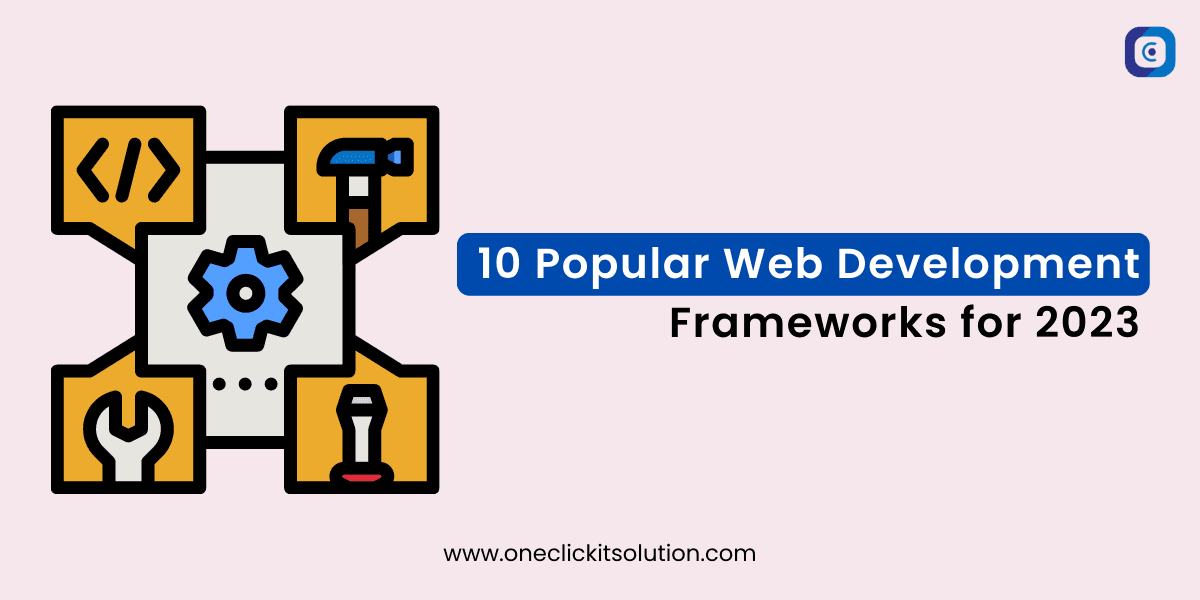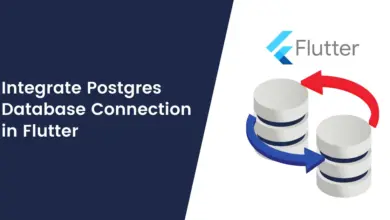10 Popular Web Development Frameworks for 2025

When it comes to web development, frameworks are an essential component. They play an essential role in the field of web development and web applications. With the rapid increase in standards for web applications, the complexity of the technology required is also increasing.
There are many front-end and back-end web development frameworks to choose from. Each framework has its own advantages and disadvantages.
Here is the list of the 10 Most Robust Front-end Development Frameworks for 2025:
1. Angular
Angular or Angular 2+ is a complete rewrite of AngularJS by the same Google team that developed the original framework in 2010.
It is, therefore, a full-fledged framework and not a simple suite of libraries. Developers can focus more on accomplishing their tasks rather than finding libraries and solutions for their tasks. This is certainly what makes Angular development one of the best user interface frameworks today.
It is created in TypeScript, which brings all its advantages and the introduction of OOP practices facilitates the transition for users of languages like C # and Java.
Created for working in large teams, Angular developers use modules allowing each part of the team to work on its part of the code without being afraid of breaking anything. It also reduces the workload in the event of code overlap and quality assurance.
2. React
ReactJs is an open-source JavaScript library that is used to build specific user interfaces.
It is generally used for single-page applications and is used to manage all views of an application for all web or mobile applications.
ReactJS is also used to reuse components of the user interface and allows developers to create web applications that can modify your data without reloading your page.
The main advantage of React JS is that it is scalable, simple, and fast. It also corresponds to a view in the MVC model. It generally acts as a combination of libraries or JavaScript frameworks.

3. Vue.JS
Vue.js was developed in 2013 as a solo project by Evan You designed for Google. In a short time, it has become the most requested framework for JavaScript. Vue.js has more than 138K subscribers in GitHub.
This framework was initially developed to facilitate the construction of user interfaces (UI) and single-page applications.
Vue.js was able to borrow some of the best features from AngularJS as well as React JS and added its own amazing features to create a simple but very functional modern design.
It is, therefore, one of the most popular frameworks to simplify web development and can easily be integrated into large frontend development projects.
4. Ember
Ember.js is an open-source client-side JavaScript framework used for web application development. It allows building client-side JavaScript applications by providing a complete solution that contains data management and the flow of applications.
It attacks the MVVM (Model-View-ViewModel) design rule and has many advantages to help developers. It comes with various features that make developers of versatile applications choose Ember over other accessible choices of this type.
However, Ember is generally intended for developers who have experience designing web applications.
5. Backbone
Building single page web applications or complicated user interfaces will become extremely difficult using just jQuery for example.
The problem is, standard JavaScript libraries are very powerful – and without realizing it, you can build an entire application without any formal structure.
Backbone.js Therefore, communication with the server must be done entirely through a RESTful API.
The current trend of the web is such that all data/content will be exposed through an API.
Indeed, the browser is no longer the only client, but also smartphones, tablets, etc. Backbone, therefore, helps to structure and help development.
Backend Frameworks
1. Django
An open-source Python web framework, Django facilitates rapid development, is easy to maintain, with a clean design, and secures websites. This Model-View-Template framework uses Python for web development. It allows authentication and messaging, follows the “Convention Over Configuration” model, and offers optimal security. This framework is so popular that it is used by giants such as Instagram, Google, and YouTube.
If you go for a Python development company, you can have the Django developers to focus on developing the components necessary for their application. It provides methods and tools for building a secure site or for updating the security elements included in the framework itself. It’s very useful for Python developers.
Some examples of huge Django-based websites: Disqus, Mozilla, National Geographic, or Pinterest.
2. Spring
In recent times, it has become the most popular framework in the Java community. The basic functionality of Spring can be used by any Java application.
It is a Model-View-Controller framework that uses Java, one of the most popular programming languages in the world. Used by a website such as Ticketmaster and Wix, Spring is a scalable, flexible, and lightweight framework that improves productivity and reduces errors. While the benefits are many, the learning curve can be steep, especially for newcomers to the Java world.
In addition, it also offers support for many applications such as Big Data, Security, JPA, Social Integration, Web-services, etc. Spring can be thought of as a collection of frameworks, also called layers, like the PAO String. Or Spring Web MVC.
You can use each of these modules separately when building a web application. Modules can also be grouped together to provide better functionality in a web application.
3. Express
Thanks to its fast and minimal framework, Express is becoming one of the most trendy frameworks. It provides some basic functionality of the framework and allows you to build an application efficiently and flexibly. Overall, its programming is much easier than that of any other platform, while it is incredibly easy to find and correct errors, thanks to the debugging mechanisms.
4. Rails
Ruby on Rails, is an open-source framework written with the Ruby programming language and founded in 2003 by David Heinemeier Hansson, who is also known as DHH.
The creator of the Ruby on Rails (RoR) framework developed it “for the happiness of programmers and beautiful code”.
With Ruby on Rails, developers no longer need to build a new site or web application from scratch, as they can use ready-made solutions for repetitive tasks.
5. Laravel
Laravel is one of the most widely used modern open-source web application frameworks for quickly and easily building custom web applications.
This popular Model-View-Controller framework uses PHP, which is one of the most popular languages on the web. Laravel development companies are equipped with authentication and construction authorization systems, this advanced frame is easy to use. There is also a large community, where Laravel developers can choose from thousands of videos and tutorials. Although it is ideal for beginners, it does not have the same in-depth features as Django or Express.
It’s an ideal choice of developers because of the performance, functionality, and scalability it offers.

Conclusion
Today, there is a multitude of frontend and backend frameworks to use or discover, each with advantages and disadvantages.
ASP.NET, a component of .NET, is a popular framework for building dynamic and high-performance web applications. It offers features like server-side rendering, data binding, authentication, and caching, making it suitable for creating modern and interactive web experiences.
Determining which is the best framework is done according to your requirements because it depends on what you are trying to accomplish, the tools you need, or the modules that you need to integrate. Agile software development services help businesses build high-quality software products that meet customer needs quickly and efficiently.
We at OneClick are experts in Full Stack Web Development using the latest and robust frameworks. If you are looking for reliable end-to-end development services, contact us for a no-obligation quote.





